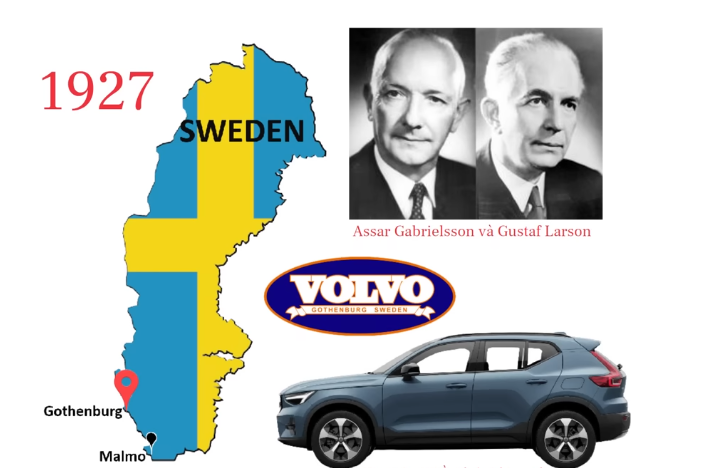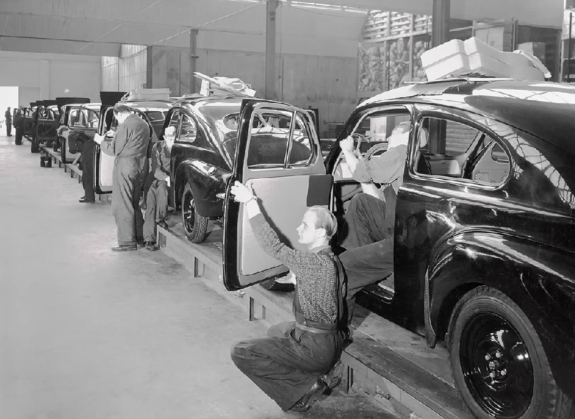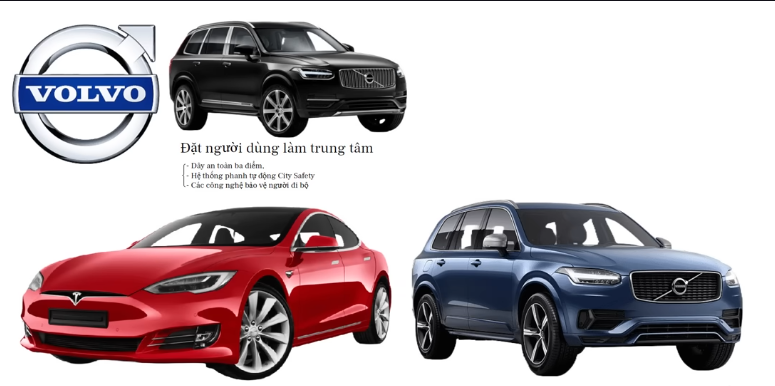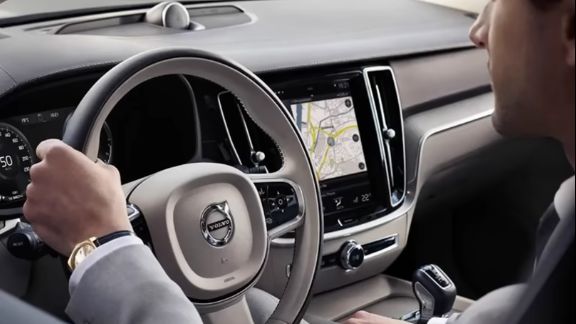We need to go back a century to 1927 in Gothenburg, Sweden, where two men named Assar Gabrielsson and Gustaf Larson founded Volvo with a simple vision: to create powerful, durable cars suitable for the harsh road conditions of Sweden. Sweden is a Nordic country with tough roads and distances between residential areas that are not always convenient. Initially, like many young companies, Volvo did not stand out with major innovations. However, that humble beginning laid the foundation for a car manufacturer that would go down in world history as one of the safest brands on the planet.

The first Volvo car was born nearly 100 years ago, named the OV4, also known as Jacob. It was officially launched in 1927. This was not a car that stood out technologically, but it clearly represented Volvo's vision of durability and safety, although at that time durability was prioritized over safety. At that time, the global car market was dominated by giants like Ford and General Motors, but Volvo confidently chose its own path. It took several decades for Volvo's major turning point in its safety journey to begin, which was in 1959, when engineer Nils Bohlin, a former employee of an aircraft manufacturer, joined Volvo and invented something we still use today: the three-point seatbelt. Before that, two-point seatbelts were widely used, but they were not safe enough for severe collisions.
Volvo's three-point seatbelt, with one strap across the hip and one strap over the shoulder, created a revolution in protecting the lives of those in the vehicle. You should also remember to fasten your seatbelt when getting in the car, and what’s amazing is that Volvo decided not to keep the patent for this invention, a wonderful act. They shared it freely with the entire automotive industry, a decision that has saved millions of lives worldwide and helped Volvo make its first mark in the field of automotive safety. Clearly, the goal of saving people from car accidents was the highest goal, not the business goal that Volvo had set. Volvo did not stop in its efforts to develop and improve safety technologies.
In the 1970s, they continued to introduce advanced safety features such as the side impact protection system, abbreviated as SIPS, in 1991, which helped reduce injuries in side collisions. This system has proven to be highly effective in protecting passengers, especially in side-impact situations, where the fatality and severe injury rates are often very high. Additionally, the Swedish car manufacturer also pioneered the installation of head and chest protection airbags in 1998. This system was designed to minimize spinal injuries in rear-end collisions, an issue that many other car manufacturers often overlook.

Research shows it has reduced the risk of spinal injury by up to 50% for front-seat passengers in accidents. Volvo did not stop in its quest for safety; by 2004, the company continued to launch the City Safety system, an automatic braking technology that helps avoid collisions at low speeds. This was a significant advancement in ensuring the safety of drivers and passengers in congested traffic situations, especially in large cities. When it was first introduced, the world was amazed. According to a study published more than 10 years later in 2015, this system helped reduce rear-end collisions by up to 28% for equipped vehicles. And if you still don’t believe it, Volvo has some impressive numbers to demonstrate the achievements they have made. Let these numbers speak for themselves.
The fatality rate is nearly zero, according to a report from the U.S. Highway Safety Insurance Institute. Volvo models, especially the Volvo XC90, from 2002 to 2018 recorded no fatalities for occupants in the U.S., which is an impressive figure, especially when compared to the average fatality rate of other manufacturers in the same segment. Before achieving that rate in real life, Volvo had to undergo rigorous Euro NCAP testing. In these crash tests, Volvo consistently ranks among the safest cars with the highest scores. For example, the Volvo XC60 achieved 98% in adult occupant protection, much higher than the industry average. Volvo also has impressive numbers regarding driver assistance systems; the company leads in developing driver assistance systems such as Pilot Assist, a semi-autonomous driving system that helps maintain lane and safe distance from the vehicle ahead. This not only makes the driver feel more comfortable but also enhances safety when traveling on highways.
Volvo is safe. Volvo is number one in this criterion. So let's try to make a few comparisons with other car manufacturers.
In reality, we know that Volvo is not the only car manufacturer that focuses on safety, but their approach is different in its consistency and user focus. If you compare Volvo with German manufacturers like BMW or Mercedes-Benz, these two names often focus on performance and driving experience. Meanwhile, Volvo always prioritizes the safety and comfort of those in the vehicle. In fact, Mercedes and BMW also have advanced safety systems, but Volvo often takes a step ahead in deploying new technologies and always places the user at the center of every design decision. This is reflected in initiatives such as the three-point seatbelt, automatic braking systems, or technologies to protect pedestrians. Another notable example is Tesla, a car manufacturer famous for its self-driving technology.

However, compared to Volvo, Tesla's self-driving features have not yet truly achieved the absolute safety level of Volvo, especially when considering real driving situations and accident rates. While Tesla strives to create breakthroughs in technology, Volvo chooses to develop technologies gradually. But they certainly ensure that every new feature is thoroughly tested before hitting the market. Volvo does not stop at its current successes but also looks to the future with ambitious goals; they set a target that by 2020, no one would die or be seriously injured in a new Volvo car. That was a goal in the past, and in reality, they have been very proactive in achieving this goal.
It demonstrates Volvo's strong commitment to protecting human lives. They have also made a significant shift towards producing electric and hybrid vehicles with strict safety standards. This not only helps minimize environmental impacts but also ensures that even future vehicle lines maintain safety as a core value.
